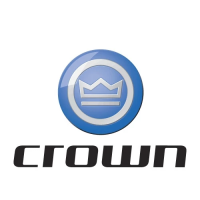LIFTING MECHANISM
Mast
322
M7.0-1055-002
02 Rev. 5/08
Mast Testing (Assembled)
With the mast assembled, there are some tests that
can be made to verify that column rollers are riding cor-
rectly.
• Inspect each channel on outer mast for roller track-
ing path. The only area that should show wear is
the flange of the channel where the roller rides.
The channel should not show signs of any cutting
or grooving. If grooving or cutting is evident, it will
normally take place at the side of the roller, 10 mm
(0.375 in) from the channel flange. If this type of
wear is evident, a shim will have to be removed.
Full surface scuffing is also a sign that too many
shims are installed.
• Once an adjustment has been made by removing
or adding shims, a recheck of the mast channel will
be required. To see the new wear pattern, clean
the channel with solvent that will remove the lubri-
cant and wipe with a cloth. Spray the channel with
a thin coat of paint. This will allow a visible indica-
tion of where the rollers are riding. Repeat as re-
quired.
• Once the mast meets requirements, lubricate mast
with grease. When the mast is raised near full ex-
tension, it should not lean right or left; instead it
should appear even and straight. If leaning condi-
tion exists, it is a sign that the shimming is too
loose or unbalanced and will need to be adjusted,
or lift chains require adjustments.
Mast Inspection
•
Verify lift chains are of equal tension by raising the
fork carriage approximately 75 mm (3.0 in) off of
ground.
• Verify lift chains are properly lubricated. Refer to
Lifting Mechanism, Lift Chains for chain lubrication
and inspection procedures.
• Extend mast to its full lift height and verify mast and
carriage extend fully without binding and mast
does not skew.
• Inspect mast rails for lubrication. Lubricate as
needed. Refer to Lubrication and Adjustment for
lubrication types and recommended intervals.
• Verify hydraulic hoses travel evenly in hose
guides.
• Verify hoses are not twisted or kinked.
• Check for hose connection leaks and tighten loose
fittings.
• Lower mast and inspect wear blocks at top of
outer, intermediate and inner stage masts for wear
and lubrication. Shim and or replace as needed.
• Inspect all column rollers for flat spots and look for
broken or missing shims. Replace as needed.
Wear appropriate items, such as safety glasses and
steel-toed shoes whenever performing maintenance
work. Do not place fingers, hands or arms through
mast or position them at pinch points.
In this section you may be required to lift and block the
truck and mast or raise and lower different components
for removal and installation. Make sure lifting device
and sling are sufficiently rated to withstand the weight
being lifted. Never work under or around a truck that is
not properly secured. Refer to truck Data Plate for truck
weight information.
It will be necessary to disconnect and remove the bat-
tery from the truck, disconnect tilt cylinders from the
mast, disconnect electrical connections and hydraulic
lines. "Control of Hazardous Energy" section provides
information for performing the above procedures along
with some additional information on other procedures
dealing with truck maintenance. This section should be
read and reviewed prior to mast removal, installation
and maintenance as outlined in this section.
Figure 16947
Channel Should Only Show Wear Here
Crown 2007 PF15690-2 Rev. 5/08

